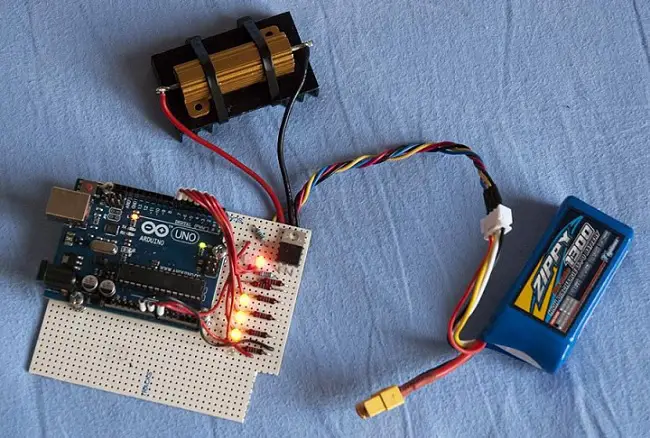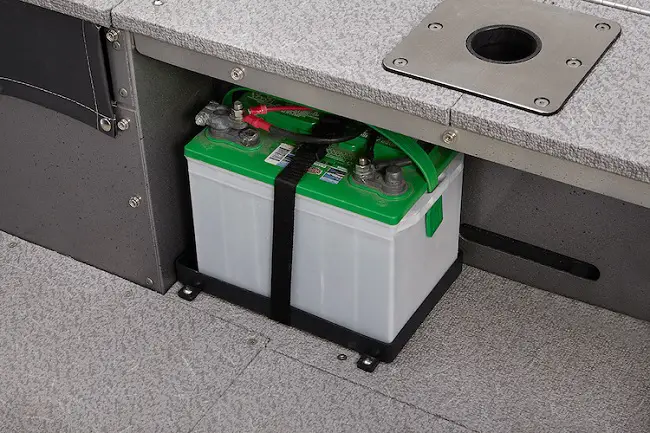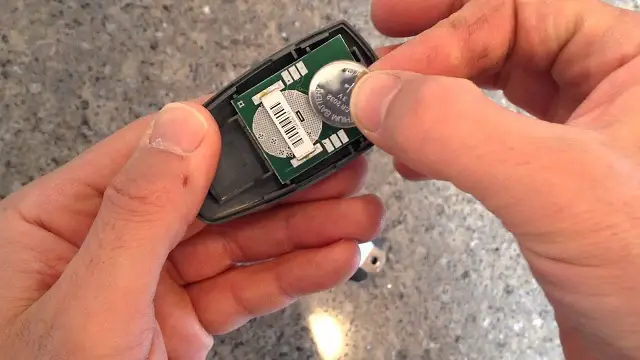LiPo or Lithium Poly batteries have become popular sources of power. Thanks to their great features, they can be found in many types of equipment and toys.
Although these batteries can save the day, storing them might result in a headache. After all, these cells need to be discharged before putting them away.
Luckily, you can learn how to discharge a LiPo battery for storage. All you need to do is follow some rules and stay alert.

How to Discharge a LiPo Battery for Storage?
To discharge a LiPo battery for storage, you can use a battery charger or a halogen light bulb. Since this activity is risky, you should not perform this activity in your home.
If you are using a LiPo battery, you can place it in storage. Before you can put it away, you must discharge it properly.
There are two ways that you can drain the power from a LiPo battery. For this task, you can either discharge the battery with a battery charger or a simple halogen bulb discharger.
Now let’s take a closer look at the different ways to discharge your LiPo battery.
1. How to Discharge a LiPo Battery Using a Battery Charger
Battery chargers are some of the best tools for draining LiPo batteries. When it comes down to it, these devices have features for safely discharging the cells.
If you want to use a charger to suck out the juice from a battery, switch the device’s setting from “Charge” to “Discharge”. Now set the charger to low as .5A-1A.
Battery chargers work quickly and do not require any technical skills to operate. However, some models might not fully discharge your battery.
2. How to Discharge a LiPo Battery with a Halogen Bulb
A homemade light bulb discharger is enough to drain a LiPo battery. It performs this task slowly until the battery reaches a safe voltage. If you have any DIY skills, you can easily build one in your home.
Tools required include a 12V, 20 W halogen bulb, and XT60b male connector. You will also need two wires, a heat shrink, and some solder. These materials are available in many online or offline stores.
For this task, ensure you use a halogen battery because they discharge the battery quickly. With this in mind, avoid building the discharger with a LED bulb. You can speed up the discharge process by using more bulbs in parallel.
After building the charger, connect it to the battery and leave it for some hours. When the battery is drained, the bulb produces a weak light.
Is It Safe to Discharge a LiPo Battery for Storage?
Draining the power from LiPo batteries is not a safe activity. When it’s performed wrongly, you might start a fire or get hurt. But if you use the following tips, there won’t be any issues.
- Avoid fires by discharging the battery inside a container like an ammo box or
- Do not use cheaply made chargers or used LiPo batteries.
- Do not discharge, use, charge, or store swollen LiPo batteries.
- Store your discharged LiPo batteries in fireproof containers as you travel. With this in mind, avoid placing the item in a travel case as the battery can burn the material.
- Store the cells at room temperature.
- Supervise the discharge process from a safe distance.
- Keep an extinguisher close by to stop any possible fires.
- Do not over-discharge the battery. Ensure that it does not drop less than 80% of its original capacity.
- If you don’t have any experience with DIY, do not attempt to build a halogen bulb discharger, instead ask a professional to make this device for you.
- Properly dispose of any puffy LiPo batteries
How to Dispose of Damaged LiPo Batteries
Sometimes, you might have a puffy LiPo battery. After checking the voltage, dispose of it immediately. To ensure safe handling, make sure you dispose of the battery at 0 volts.
For proper disposal, take the unit to a local recycling facility.
Wrapping Up
Even if lithium-polymer batteries provide ideal energy for devices, it has some issues. For instance, you can’t store a fully charged version of this cell.
Before you can keep the LiPo in storage, consider draining it with a halogen bulb discharger or battery charger.
Stay safe by working on good batteries and using the best equipment. You should also supervise the process until the end and dispose of any puffy cells.


